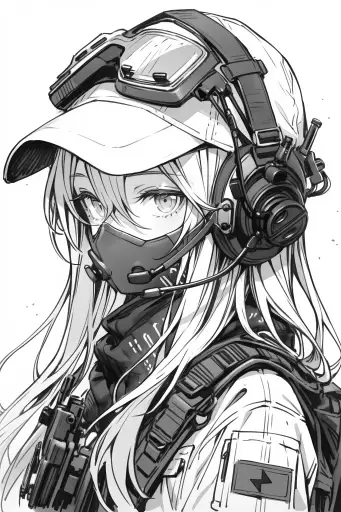Explore the Best AI Image Gallery

Beyond the Brush: How Edge Computing is Transforming Creative Industries
The creative landscape is undergoing a seismic shift, driven by advancements in technology that are blurring the lines between the physical and digital realms. While wearable tech has captured much of the spotlight, another powerful force is quietly revolutionizing how we create and consume art, design, and entertainment: edge computing.
Edge computing brings computation and data storage closer to the source of data generation, enabling real-time processing and reduced latency. This shift has profound implications for creative industries, empowering artists, designers, and developers with unprecedented capabilities.
Applications at the Edge: Redefining Creative Possibilities
- Interactive Installations: Imagine immersive art installations that respond to viewer movements and emotions in real time. Edge computing allows for instant data processing and dynamic content adaptation, creating truly interactive experiences.
- Personalized Storytelling: Tell stories that adapt to individual viewers preferences and choices. Edge computing enables personalized narratives where the plot, characters, and even visuals evolve based on user interaction.
- Collaborative Creation: Break down geographical barriers and foster global collaboration. Edge computing facilitates real-time co-creation, allowing artists from different locations to contribute to a single project simultaneously.
- Real-Time Performance Art: Imagine musicians whose instruments generate soundscapes that react instantly to their movements or even the audiences energy. Edge computing empowers performers with tools for unprecedented sonic and visual expression.
Ethical Considerations: Navigating Uncharted Territory
The transformative power of edge computing in creative industries also raises important ethical considerations:
- Data Privacy and Security: As edge devices collect vast amounts of user data, ensuring privacy and security becomes paramount. Transparent data practices and robust security measures are essential to protect user information.
- Algorithmic Bias: AI algorithms used in creative applications can perpetuate existing biases if not carefully designed and monitored. Its crucial to address algorithmic bias to ensure fairness and inclusivity in creative outputs.
- Ownership and Copyright: The collaborative nature of edge-powered creation raises questions about ownership and copyright. Establishing clear guidelines for intellectual property rights is essential in this evolving landscape.
Future Trends: Where Will Edge Take Creativity?
The convergence of edge computing, artificial intelligence (AI), and the metaverse promises to unlock even greater creative potential:
- Hyper-Personalized Experiences: Imagine art exhibitions tailored to your individual preferences, or music compositions generated based on your emotions. Edge computing will enable highly personalized creative experiences.
- AI-Assisted Creativity: AI algorithms will become increasingly sophisticated, assisting artists in generating ideas, refining designs, and even co-creating artworks. This collaboration between human and machine will push the boundaries of artistic expression.
- Immersive Virtual Worlds: Edge computing will power immersive metaverse experiences where users can create, share, and interact with art and design in virtual spaces.
Conclusion: Embracing a New Era of Creative Innovation
Edge computing is poised to revolutionize the creative industries, empowering artists, designers, and developers with tools for unprecedented innovation. By embracing its transformative potential while addressing ethical considerations, we can unlock a future where creativity knows no bounds.



![**Representation: A teenager smiling while thinking about a friendly dog, a comic-style thought bubble with a friendly dog inside. Graphic style: Line drawing, cartoon style, influenced by Franco-Belgian comics, thick black lines, simplified design, vector, black and white only, in the style of Keith Haring or the French comic strip "Alinéa". [IMPORTANT]: A single continuous line extending from one side of the image to the other, minimalist, strong outlines, line drawing, without lifting the hand, ultra-simplified, no shading, entirely white image, drawing created in the center of a sheet of paper. --ar 16:5** - <@627984126871470085> (fast)](https://images.ai-img.art/thumbnails/150/6fc850f638e3dee0c4b121acecad2c8419e02bdeac7f871d625f1003c1c3abe1.webp)
](https://images.ai-img.art/thumbnails/150/157712d76865d557120f9baf988de3d0525225295a2789c89bf2c4a5a96a03d1.webp)












![**Representation: A dog acting as a private tutor to a child. The dog holds a ruler in its paw and stands at the blackboard to explain a dog diagram to the child. Graphic style: Line drawing, cartoon style, influenced by Franco-Belgian comics, thick black lines, simplified design, vector, black and white only, in the style of Keith Haring or the French comic strip "Alinéa". [IMPORTANT]: A single continuous line extending from one side of the image to the other, minimalist, strong outlines, line drawing, without lifting the hand, ultra-simplified, no shading, entirely white image, drawing created in the center of a sheet of paper. --ar 16:5** - <@627984126871470085> (fast)](https://images.ai-img.art/thumbnails/150/7a854648a81e51241dcca8d24dd6e3bfcf07ad1df51baf401c9b729f4cf411fa.webp)

![**Representation: A dog acting as a private tutor to a child. The dog holds a ruler in its paw and stands at the blackboard to explain a dog diagram to the child. Graphic style: Line drawing, cartoon style, influenced by Franco-Belgian comics, thick black lines, simplified design, vector, black and white only, in the style of Keith Haring or the French comic strip "Alinéa". [IMPORTANT]: A single continuous line extending from one side of the image to the other, minimalist, strong outlines, line drawing, without lifting the hand, ultra-simplified, no shading, entirely white image, drawing created in the center of a sheet of paper. --ar 16:5** - Variations (Strong) by <@627984126871470085> (fast)](https://images.ai-img.art/thumbnails/150/f4e034998ccd869d8a061fd12017514fcd92210eb33d4222dc9b54716223f4dd.webp)










](https://images.ai-img.art/thumbnails/150/9d51c5e673b4f2068b7b01abc35425a06f173b76303adf9ad29ca14302c25b18.webp)







](https://images.ai-img.art/thumbnails/150/51c93500396faff4e7fa8b42bc68033067b16b2230e3496e95c482a581ff0fe9.webp)





